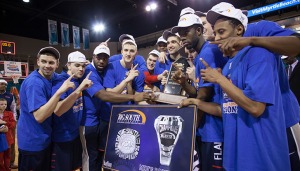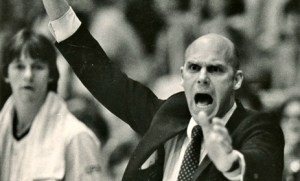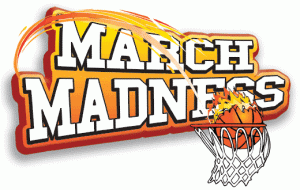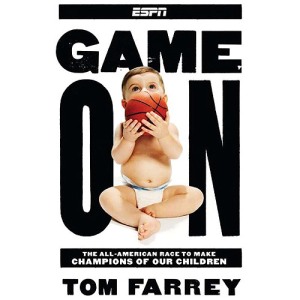It’s that one time of year when men start talking about dancing – but it’s not that kind of dance. I’m not exactly sure where it originated, but somewhere along the line the NCAA men’s basketball tournament has come to be known as “The Big Dance” making every college basketball team out there excited about “going dancing” in March!
If you’re not familiar with the NCAA men’s basketball tournament, it makes for a pretty interesting case study in American values and philosophy. The tournament has gradually expanded over the past several decades to where it most recently added a “First Four” teams who play in Dayton, OH, during the week, the same week the tournament of 64 begins – bringing the total team count to 68. Several conference tournament winners earn an “automatic bid” into the Big Dance, bringing schools that you’ve never heard of invaluable PR. The remainder of the teams are selected at-large by a selection committee. Essentially, these automatic qualifying conferences guarantee that smaller, less powerful schools get the national platform the NCAA tournament provides (even my alma mater, Lipscomb University, has a tie in through the Atlantic Sun Conference . . . though we are still awaiting our first bid).
 I was on my way home yesterday and caught an interesting conversation on the local sports radio station regarding the merits of Liberty University who earned their way to the Dance over the weekend with a un-inspiring record of 15-20. That’s right, they lost five more games than they won, but will be among the 68 who get to play in the NCAA’s post-season tournament. They lost their first 8 games and boast losses to the juggernauts Presbyterian College, Iona, and Howard. They went a measly 6 – 10 in their conference play – a conference that bids schools named Longwood, Highpoint, and Coastal Carolina. And yet they won the final few games of the season . . . at just the right time . . . and viola – they will find themselves with a post-season game, a national spotlight, and at least a little extra attention.
I was on my way home yesterday and caught an interesting conversation on the local sports radio station regarding the merits of Liberty University who earned their way to the Dance over the weekend with a un-inspiring record of 15-20. That’s right, they lost five more games than they won, but will be among the 68 who get to play in the NCAA’s post-season tournament. They lost their first 8 games and boast losses to the juggernauts Presbyterian College, Iona, and Howard. They went a measly 6 – 10 in their conference play – a conference that bids schools named Longwood, Highpoint, and Coastal Carolina. And yet they won the final few games of the season . . . at just the right time . . . and viola – they will find themselves with a post-season game, a national spotlight, and at least a little extra attention.
And that is exactly why they field a basketball team. Somewhere Jerrry Falwell is smiling. The fact of the matter is that big time college sports and higher education make strange bedfellows. Big time college sports make an even stranger bedfellow for Christian higher education. Falwell followed the lead of fellow evangelist Oral Roberts and his university (a lead that subsequently has been followed by scores more) all viewing big time sports as the ticket to publicity. While I was at Lipscomb, there was no doubt that that was the biggest thing to be gained in leaving the rich tradition of winning the school had in the NAIA. (In another story for another day, the move from NAIA to NCAA would end up costing the school one of the greatest coaches to ever coach college basketball, Don Meyer). 
The relationship between Christian colleges and big time athletics serves as a good example of the dualism that has plagued the church in its appraisal of sports. Sports, it seems, are often viewed as simply a means to an end. If the goal is lofty enough (promoting the purpose of the university, say) then we can hedge here or there in order to do what is necessary to get the team to the national level. If you ever have a chance, read the history of Oral Roberts University and their basketball program which made a major push for the success of their basketball team back in the 1970’s, immediately finding success on the national level . . . and also scandal on the national level.
I find little distinction in approaches taken to athletics by most Christians. It seems in most Christian sports circles that to be a good Christian and participate in sports has little more impact than making one promote good sportsmanship. Just look at the kinds of athletes who write books – those who are successful. The titles of their books read like they were plucked off the self-help aisle at Barnes and Noble: The Winner’s Manual (Jim Tressel), The Score Takes Care of itself (Bill Walsh), Bo’s Lasting Lessons (Bo Schembechler), Coach Wooden’s Pyramid of Success (John Wooden), Win Forever (Pete Carroll), What it Takes to be Number One (Vince Lombardi) . . . and you could go on and on with these books. There’s nothing inherently wrong with them, but what should make us pause is to note how difficult it is to know where the distinctly Christian message ends and where the more general promotion of sportsmanship begins. They just kind of melt together providing a message that reads more like a promotion of civic religion than anything distinctly Christian. I’m all for sportsmanship . . . “but don’t even the pagans do that?”
In many ways, the NCAA men’s basketball tournament is the spectacle of the Power of sports displayed for all to see. It is beautiful and there are few things as exciting to watch as buzzer-beater endings and majestic slam dunks. But beneath the veneer of these games is a system that is deeply flawed and Fallen alongside all of the other Powers. Coming to terms with our participation in these Powers is something Christians should take more seriously.
I was excited to end my week of research last week by finding no more than Karl Barth to have spoken to the power of sports:
“Who are the principalities and powers today in our world? I will mention only some of them. Everywhere that an ideology is ruling, there is such a power; a communist or anticommunist ideology; money is such a power. No need to give a description. Sport is such a power. Traditions of all kinds are such angelic powers. Fashion for men and women is also a power. . . . I think that all these powers represent certain human possibilities that are given as a part, as an appearance of God’s good creation in man. None of these things is bad, necessarily; but now we have to deal with the man who has separated himself from God and from his neighbor.”
Meeting at Rockefeller Memorial Chapel, the University of Chicago, April 25 – 26, 1962. Quoted in A Keeper of the Word: Selected Writings of William Stringfellow. Edited by Bill Wylie Kellerman. P. 190 – 191



